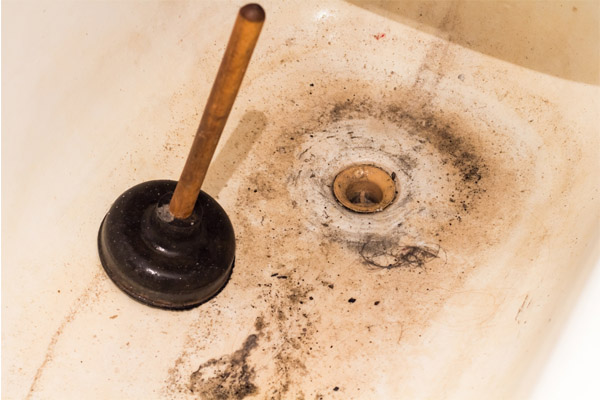Almost everyone maintains their own thoughts about Why is There Sewage Coming Up Through the Bathtub.

Sewer backup in the tub can be an upsetting and unsanitary trouble for any type of home owner. Not only is it troublesome, but it likewise postures serious wellness threats and indicates underlying problems with the plumbing system. Understanding why sewer is showing up with the bath tub is crucial for taking ideal activity to deal with the issue effectively.
Introduction to the Problem
Typical Factors for Sewage Backup
Blockages in the Sewer Line
Among one of the most usual reasons for sewer backup is a clog in the sewer line. This can occur as a result of the buildup of particles, oil, or foreign things in the pipelines, protecting against correct flow and creating sewage to support into your tub.
Tree Root Invasion
Tree roots looking for moisture and nutrients can infiltrate sewage system lines with small splits or joints. Over time, these roots can grow and increase, triggering substantial damage to the pipes and resulting in sewer backup problems.
Recognizing the Issue
When sewer draws back up right into the bath tub, it's a clear indicator of a problem with the drainage system. The wastewater that needs to be streaming far from your home is rather finding its way back into your living space, which can cause considerable damages and health hazards.
Potential Causes
Numerous aspects can contribute to sewage back-up in the bathtub. From blockages in the drain line to problems with the plumbing facilities, determining the origin is essential for locating an option.
Aging Infrastructure
Older homes might have dated plumbing systems that are extra prone to corrosion, cracks, and damage. As pipelines age, they come to be much more susceptible to leakages and clogs, raising the possibility of sewer backup events.
Heavy Rainfall or Flooding
Throughout periods of heavy rainfall or flooding, the drain system may end up being overloaded with excess water, causing backups and overflows. This can result in sewage backing up right into tubs and other fixtures inside the home.
Signs of Sewer Backup
Foul Odors
Unpleasant smells emanating from drains or components, particularly in the restroom, may show sewage backup concerns. These smells are typically solid and persistent, indicating an issue that calls for instant attention.
Slow Draining Fixtures
Bathtubs, sinks, and toilets that drain gradually or otherwise at all could be experiencing sewer backup. If numerous components are affected at the same time, it's most likely that the concern stems from a typical factor, such as the primary sewer line.
Gurgling Noises
Unusual gurgling or gurgling noises originating from drains when water is running elsewhere in your home are indicative of air caught in the plumbing system. This air accumulation can arise from sewage backup and need to be investigated quickly.
Health Dangers Connected With Sewer Back-up
Contamination of Water System
Sewer back-up can contaminate the water in your house, posturing a major health danger to you and your family members. Direct exposure to contaminated water can lead to intestinal issues, skin infections, and various other health problems.
Mold Growth
Dampness from sewer backup can create excellent conditions for mold development in your house. Mold and mildew spores can exacerbate respiratory system problems and cause allergies in sensitive individuals, making prompt clean-up vital.
Spread of Disease
Sewage contains dangerous germs, viruses, and parasites that can trigger a series of diseases, including hepatitis, cholera, and gastroenteritis. Coming into contact with sewer or infected surfaces puts you at risk of infection.
Tidying up After Sewer Backup
Sanitation Procedures
Thoroughly sanitize and sanitize influenced locations after sewage backup to get rid of damaging germs and prevent mold and mildew growth. Use suitable cleaning items and protective equipment to ensure secure and reliable clean-up.
Repair of Impacted Locations
Repair any kind of damages to flooring, wall surfaces, or components brought on by sewage back-up. Depending upon the level of the damage, you may require to replace carpeting, drywall, or other products to recover your home to its pre-loss problem.
Immediate Actions to Take
Shutting Off Supply Of Water
In the event of sewage backup, it's vital to turn off the water system to stop more contamination and damages. Locate the primary water shutoff valve in your home and shut it off until the issue can be settled.
Getting In Touch With an Expert Plumber
Managing sewage backup is not a do it yourself job. Contact an accredited plumber with experience in handling sewage-related issues to assess the situation and execute needed repair work or cleanups.
Preventing Contact with Contaminated Water
Until the sewage backup is resolved, stay clear of contact with infected water to stop the spread of germs and pathogens. Put on safety gear if you should remain in the affected location and wash your hands thoroughly later.
Safety nets
Normal Upkeep of Sewage System Lines
Schedule normal examinations and upkeep of your sewage system lines to determine and deal with potential concerns before they rise into major troubles. This can include cleaning debris, evaluating for tree origin intrusion, and fixing any broken pipes.
Installing Bayou Valves
Consider setting up backwater shutoffs in your plumbing system to avoid sewage from flowing back right into your home during durations of heavy rainfall or flooding. These valves instantly close when water draws back up, protecting your building from contamination.
Correct Disposal of Household Waste
Stay clear of purging anything aside from toilet tissue and human waste down the bathroom to prevent clogs and clogs in the sewage system line. Dispose of oil, oil, and other house chemicals properly to decrease the danger of plumbing problems.
Why Is Water Backing Up in My Bathtub When I Flush My Toilet?
What to do about a sewer line clog
First, don’t bother with plunging. No amount of plunging will dislodge the clog in a sewer line. The clog is too far away. Plungers are for clogs in the toilet itself, not the sewer line. Plus, the most likely causes of a sewer clog are:
Tree roots Flushed toys or feminine products Grease buildup Those items don’t move easily. And in the case of tree roots, the roots need to be cut out of the pipe and the pipe will need to be repaired.
You’ll need a closet auger. A closet auger is a type of plumber’s snake with a protective cover to keep from scratching the delicate porcelain toilet. If the clog is further down, you may need to remove the toilet or use one of your cleanouts to get to the clog.
We also recommend doing a video inspection of the drain to ensure that the cause of the clog has been completely removed. Otherwise, you could have the same problem again in a few days or weeks.
https://mspplumbingheatingair.com/blog/why-is-water-backing-up-in-my-bathtub-when-i-flush-my-toilet

I recently found that review about Why is Sewage Backing Up Into My Bathtub? while browsing the search engines. So long as you appreciated our blog entry if you please do not forget to pass it around. Thanks a lot for going through it.
Maintenance Sign-Up
 Mara Wilson Then & Now!
Mara Wilson Then & Now! Kelly McGillis Then & Now!
Kelly McGillis Then & Now! Danny Pintauro Then & Now!
Danny Pintauro Then & Now! James Van Der Beek Then & Now!
James Van Der Beek Then & Now! Marcus Jordan Then & Now!
Marcus Jordan Then & Now!